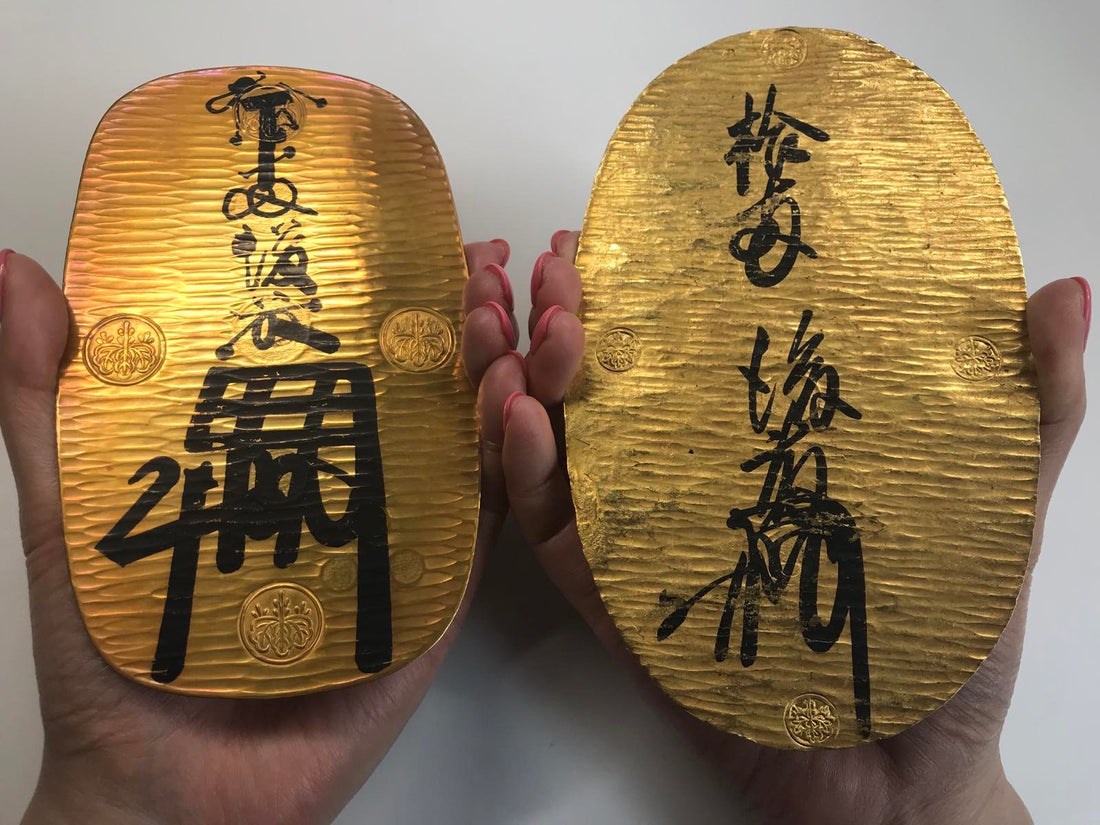Ancient Period
In ancient Japan, where the economy was based on barter, commodities such as rice, salt, and fabric were used as substitutes for money. The first metal money (coined currency) made in Japan, known as "Wado Kaichin", was modeled after Chinese coins and was created in the latter half of the 7th century.
In the first year of Wado (708), natural copper was discovered for the first time domestically in the Chichibu District of Musashi Province (now Chichibu City, Saitama Prefecture), and this copper was used to mint the "Wado Kaichin". Following the creation of the "Wado Kaichin", a total of 12 types of coins were produced over two and a half centuries until the Heian period. These 12 types of coins are referred to as the "Twelve Imperial Cashes".

However, due to a shortage of domestic copper and financial difficulties of the state, the quality of the coins declined with each new issuance, leading to a loss of public trust. As a result, the minting of coins domestically was discontinued following the "Kengen Taiho" in the second year of Tendo (958), and there was a temporary regression to an era where rice and silk were used as substitutes for money. During this period, silver "Wado Kaichin" and the gold "Kaiki Shoho" coined in 760 were also made, but they did not circulate as money.
The next domestic issuance of currency would not occur until the Edo period, with the introduction of the "Kan'ei Tsuho".
Medieval Period
Despite the lack of domestic issuance, people sought a convenient form of money for transactions. This demand was met by "Toraisen," coins imported from China. Although interaction with China had ceased since the abolition of the Japanese envoy to Tang China in the 6th year of Kanpyo (894), trade between Japan and Song China became prominent after the founding of the Song dynasty, leading to a large influx of Song coins used in trade for Japanese gold dust. Despite frequent prohibitions on their use, Song coins started to be widely circulated among the people.
In the 15th century, many coins were made without the state's permission. These included "private mint coins" (Shichusen), created from molds based on Chinese coins, "imitation coins" (Mochusen) made using original master molds rather than those of Chinese coins, and "Kajiki coins," replicated from the Ming dynasty's "Hongwu Tongbao" in Kajiki, Osumi Province (now in Kagoshima Prefecture). The trend of selecting good quality coins from a variety of private mint coins and avoiding poor-quality ones, known as "Erizeni," emerged, leading the Muromachi Shogunate and feudal lords to issue orders to regulate this practice, but to no avail.
In the 16th century, with the advancement of refining technology, gold and silver started to be used among warlords and merchants. The "Koshu gold" (Koshu-kin) produced by Takeda Shingen of Kai province (now Yamanashi Prefecture), known for having the most significant gold production during the Sengoku period, is well-known. Among all, Toyotomi Hideyoshi, who seized control of mines across the country, enhanced his power through gold.
Early Modern Period
During the Edo period, domestically issued money made its reappearance, bringing about a unified monetary system where there had been disarray. Tokugawa Ieyasu, who had achieved nationwide unification, issued five types of gold and silver coins in 1601—large and small coins (Oban and Koban), Ichibukin, Chogin, and Mameitagin—all standardized in terms of size, weight, and fineness (the proportion of gold and silver).
Following this, in 1636, the third Shogun, Tokugawa Iemitsu, created the copper coin "Kan'ei Tsuho." This established a tri-metallic system of gold, silver, and copper coins. Subsequently, in 1670, the use of imported coins was banned.

The value of gold coins was fixed, expressed in the units of "Ryo," "Bu," and "Shu" (with one Koban equal to 1 Ryo = 4 Bu = 16 Shu, a base-4 system). The value of silver coins was determined by weight, using the units of "Kan," "Monme," and "Fun." The unit for copper coins was "Mon," with 1,000 Mon being equivalent to 1 Kan. Money changers (Ryogaesho) developed to facilitate the exchange of these three types of money.
As the Edo period progressed, the developing economy and financial difficulties of the Shogunate led to frequent recoinages, altering the fineness and weight of gold and silver. At this time, new types of gold and silver coins were created, including Nishukin, Nibukin, Isshukin, Goryoban, and others like Nishugin which were denominated in gold coin units. In the provinces, paper money issued by feudal lords (Hansatsu) and private bills by court nobles and temples were also used.
Modern Period
The Meiji government, aiming for modernization, began issuing government banknotes. Additionally, they introduced a new monetary unit called the "Yen," changing from the previous base-4 system to a decimal system, consisting of Yen, Sen, and Rin. However, due to the widespread circulation of counterfeit notes, the government ordered the production of banknotes from a German printing company, issuing the beautifully detailed and colorful "New Currency Notes" (Meiji Tsuho Notes). As flaws were identified over time, these notes underwent modifications. At this time, following the system in the United States, 153 banks were established across the country. The banknotes issued by these private banks adopted a lengthwise format to align with international standards.
In 1876, during the ninth year of the Meiji era, the first banknotes featuring a portrait were produced domestically. A mint was also established in Osaka, where coins were made utilizing machinery purchased from the British Mint in Hong Kong, while incorporating traditional Japanese designs.
When the Southwestern War broke out, a large amount of currency was issued for war expenditure, causing its value to drop, and the government reduced the number of banknotes issued. This led to the establishment of the Bank of Japan as a central bank capable of issuing a unified currency to stabilize its value.
As the war intensified, in order to cover the costs of supplies in the battlefield and soldiers' pay, military banknotes were issued separately by the government, in addition to those issued by the Bank of Japan.
Present Period
The "Bank of Japan" became the sole issuer of banknotes, which at that time were intended to be exchanged for gold or silver coins. However, in the Bank of Japan Act of 1942 (Showa 17), this practice of exchanging for gold or silver coins was abolished. Instead, similar to the present system, the government and the Bank of Japan began to control and adjust the amount of currency issued based on the economic situation.
During the final stages of the Pacific War in 1945 (Showa 20), "clay currency" was prepared due to metal shortages, but it was never issued due to the end of the war. When the war ended, the amount of money increased while domestic resources dwindled, leading to a collapse in the value of money. As a result, the unit of currency was increased and new money was issued, a process known as the "Yen Switch-Over." Until the new notes were distributed, banknotes with "certificates" affixed to them were also in circulation as old money was collected. In 1950 (Showa 25), a new 1,000 yen note was issued, and by 1953 (Showa 28), the unit of "sen" was eliminated.
Since then, banknotes have been improved in terms of paper quality and printing technology, leading to the issuance of superior bills featuring anti-counterfeiting measures and universal design. Also, coins have incorporated bright and peaceful designs.


